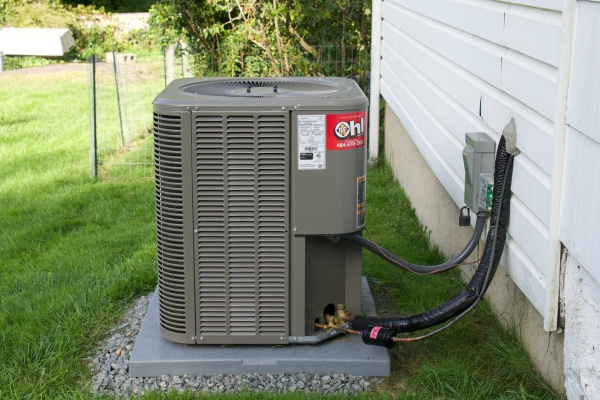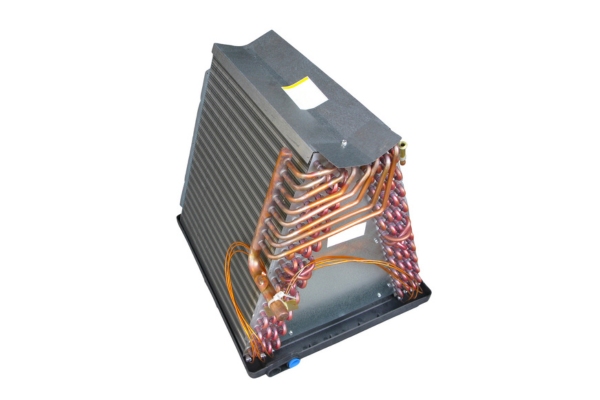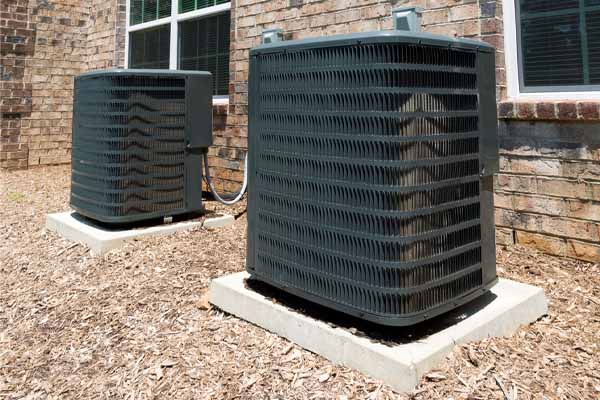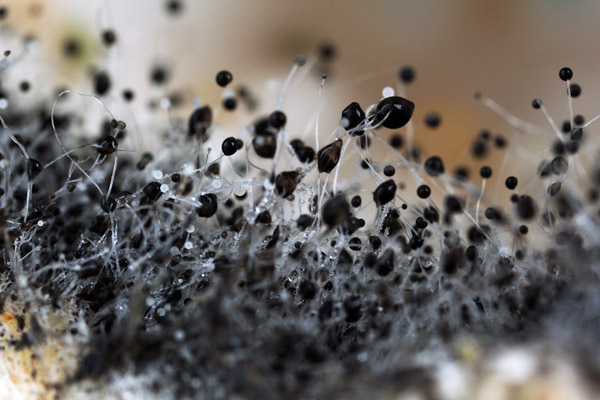A/C Condenser Vs Evaporator Coil: What’s The Difference?

Air conditioning units are crucial for maintaining indoor comfort. They do this not by creating cold air but by removing heat from your home and moving it outside. This process relies heavily on the teamwork of two main components: the condenser and evaporator coils. Although they might look alike, each coil has a unique role in cooling your space, functioning in tandem but in contrasting manners to reduce indoor heat effectively.
This article by R.F. Ohl explores the functions and differences between the condenser vs evaporator coil. Distinct roles of condenser and evaporator coils, shedding light on their contributions and their collective impact on the efficiency of your air conditioning system.
What’s The Difference Between A/C Condensers & Evaporator Coils?
Contents
Central air conditioning has an interior and exterior component linked by refrigerant-carrying tubes, which are crucial for the cooling mechanism. The refrigerant’s capacity to absorb substantial heat and transition between gas and liquid states due to pressure shifts is essential.
Once the system is in operation, the refrigerant moves between these units, enabling effective heat exchange. The critical role of the condenser and evaporator coils includes overseeing the refrigerant’s state changes to manage heat displacement proficiently.
The AC Unit’s Evaporator Coil

Your air conditioner’s evaporator coil is within the indoor unit and comprises copper tubes filled with very cold refrigerant. When warm air inside your home passes over the coil, thanks to the system’s blower, the refrigerant inside absorbs the heat. At the same time, the air’s moisture condenses on the chilly coils, effectively lowering the humidity.
This action cools and dries the air, which the blower redistributes into the living space, significantly improving comfort levels. After exiting the evaporator coil a bit warmer than when it entered, the refrigerant travels through an insulated conduit to the outdoor unit. This unit is a sizable cabinet that contains the compressor and condenser coils.
When the refrigerant reaches the compressor, it is subjected to high pressure, significantly increasing its temperature. This superheated refrigerant is more effective at transferring heat to the outside air, an essential step in the air conditioning cycle.
Schedule a comprehensive maintenance appointment today to maximize your air conditioning system’s efficiency and longevity. Call R.F. Ohl now!
The Air Conditioner’s Condenser Coil

While similar in design and material to the evaporator coil, the condenser coil serves a different purpose in the air conditioning system. Unlike the evaporator coil, which absorbs heat from indoor air, the condenser coil expels that heat outside. This ongoing cycle of absorbing and releasing heat persists until the desired thermostat temperature is achieved.
Throughout this process, the gentle humming of the compressor and fans usually signifies the system is actively working to maintain comfort. As the warm refrigerant vapor releases heat to the outside environment, it cools down and reverts to liquid. This cooling process is aided by a fan within the outdoor unit, which propels air over the condenser coil, boosting the efficiency of heat discharge.
Once transformed back into a liquid, the refrigerant is ready to journey back to the evaporator coil inside. It moves through an expansion valve that vaporizes and cools it once more, preparing it to absorb additional heat in the next cycle.
Optimizing AC Performance through Coil Compatibility
Achieving the perfect match between A/C condenser and evaporator coils is essential for enhancing your air conditioning system’s efficiency and extending its life. Using mismatched parts can result in reduced performance, increased operational expenses, and the risk of system breakdowns. When it’s time for part replacements or upgrades, it’s vital to ensure that the coils and condenser share the same size, capacity, and type of refrigerant to maximize heat transfer and overall system functionality.
Manufacturers typically suggest specific combinations that have been proven to work best together. Seeking advice from HVAC experts or following the manufacturer’s recommendations can significantly contribute to your system’s smooth operation, ensuring improved comfort and energy efficiency.
Trust R.F. Ohl’s expert technicians to deliver reliable HVAC service—contact us now to schedule your coil maintenance and keep your home comfortable. Call us today!
Cooling System Coil Upkeep
Keeping your air conditioning system in top shape involves regularly maintaining the evaporator and condenser coils. This task doesn’t demand heavy lifting but simply an annual check-up by a certified HVAC professional. In this session, the specialist will focus on the coils while examining the rest of the system to guarantee its overall health. The service encompasses a detailed inspection based on a standard maintenance checklist for air conditioning systems, targeting enhanced energy efficiency and prolonged operational life.
Common Air Conditioner Coil Issues
The coils within an air conditioner are pivotal for its functionality but can face several challenges, including:
1. Corrosion
Though evaporator coils are crafted from corrosion-resistant materials like copper and aluminum, they’re not impervious to wear over time. Corrosion and pitting can lead to tiny, often hard-to-detect openings that significantly hinder the system’s efficiency.
These imperfections can cause refrigerant leaks, which can release harmful substances into your home and reduce the system’s heat absorption capabilities due to lower refrigerant levels. HVAC experts can spot and mend these leaks, replenishing the system with fresh refrigerant to regain optimal performance and ensure safety.
2. Dirt
Dust and airborne debris can find their way into the air conditioning system, sticking to the coils and creating an insulating barrier that drastically reduces heat transfer efficiency. This barrier impedes the coils’ ability to absorb and release heat properly, forcing the system’s fans to run longer than necessary to maintain the desired temperature. This increases the strain on the system’s components, energy use, and costs. To avoid these issues, keeping the coils clean through regular maintenance is essential.
3. Mold

The dark, moist interior of indoor air conditioning units, shielded from sunlight, offers a perfect breeding ground for mold and mildew. These conditions facilitate the fungi’s proliferation within the system and its distribution around the home through the ductwork, negatively impacting the indoor air quality and possibly posing health risks to inhabitants. Furthermore, mold growth can obstruct airflow by blocking the evaporator coil fins, diminishing the system’s efficiency.
4. Debris
The external component of an air conditioner often faces the challenge of debris accumulation, such as dried leaves, twigs, and miscellaneous outdoor waste. This accumulation can obstruct the airflow to the condenser coil, crucial for releasing heat from the refrigerant to the outdoors, thereby hindering the system’s efficiency. A simple yet effective preventative measure is to keep the area around the unit clear of vegetation and other potential obstructions, coupled with regular cleanings.
Refrigerant Problems
If your air conditioner suddenly isn’t cooling as well as it used to, it might have low refrigerant levels. The system needs a precise amount of refrigerant to absorb heat from your home and expel it outdoors efficiently. A drop in this critical fluid means the system has to work harder to cool your space, possibly causing the coils to freeze and even leading to shutdowns.
This is especially problematic during hot weather, as it can leave you in uncomfortably warm conditions indoors. Should you suspect an issue with the refrigerant, it’s crucial to contact an HVAC technician for a thorough inspection and repair.
Don’t wait for cooling system problems to arise—take proactive measures to keep your coils in optimal condition with a scheduled maintenance appointment. Book an appointment with R.F. Ohl today!
Conclusion
Air conditioning systems masterfully regulate temperature by managing heat exchange. They utilize refrigerant between two crucial elements: the evaporator coil, which absorbs heat from the inside, and the condenser coil, which releases it outdoors. These components collaborate seamlessly to cool your home effectively.
Recognizing and preemptively addressing coil-related issues is critical for optimal efficiency. Annual maintenance checks by a skilled HVAC technician are vital in averting typical problems and enhancing the durability and efficiency of your air conditioning unit.
Contact R.F. Ohl for Comprehensive HVAC Solutions
R.F. Ohl stands out in Northeastern Pennsylvania for our exceptional heating and cooling solutions. Our team of professionally certified technicians excels in providing top-notch HVAC services, including maintenance, repairs, and installations. We’re committed to excellence, ensuring your system operates at its best.
R.F. Ohl is committed to offering unparalleled value and competitive pricing on all heating and cooling services in the area. Our maintenance solutions are designed to boost your comfort and efficiency, helping to reduce your energy costs. Whether you need a repair or a new system, R.F. Ohl is here to provide tailored solutions. With our satisfaction guarantee, you can trust our quality service. Contact us for a free in-home estimate and to schedule your next service visit.
For a free, in-home estimate and to schedule your service, call R.F. Ohl. Choose us for reliable and exceptional heating and cooling solutions that meet your expectations.
Click here to contact us today or give us a call at (610) 377-1098 if you have any questions. Click the link to view our service area.

Related Articles: